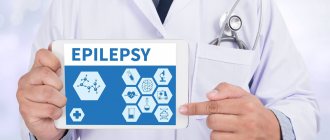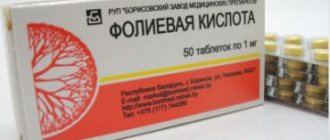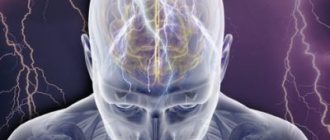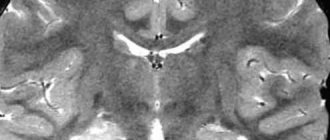With epilepsy, metabolic processes in the patient's brain are disrupted, and this leads to epileptic seizures. Seizures are divided into generalized and partial. They differ in clinical features and mechanism of development. An attack occurs when pathological excitation in the brain dominates the processes of inhibition. A generalized epileptic seizure differs from a partial seizure by the presence of an abnormal process in both hemispheres. In partial seizures, a focus of excitation is formed in only one area of the brain, spreading to neighboring tissues. Treatment of the disease depends on the type and nature of the attack.
Features of the disease
Partial epileptic seizures can occur at any age. This occurs due to the fact that structural changes lead to disturbances in the psychoneurotic status of a person. There is also a decrease in intelligence.
Partial seizure in epilepsy is a neurological diagnosis that indicates the chronic course of brain diseases. The main feature is the occurrence of convulsions of varying strength, shape, as well as the nature of the course.
Main classification
Partial seizures are characterized by the fact that they affect only a certain part of the brain. They are divided into simple and complex. Simple ones, in turn, are divided into sensory and vegetative.
Sensory partial seizures are mainly accompanied by hallucinations, which can be:
- auditory;
- visual;
- taste.
- rapid heartbeat;
- heavy sweating;
- fear and depression.
It all depends on the location of the lesion in certain parts of the brain. In addition, there is a feeling of numbness in a certain part of the body.
Autonomic partial seizures occur when the temporal region is damaged. Among their main manifestations it should be noted:
Complex partial seizures of epilepsy are characterized by a slight disturbance of consciousness. The lesion extends to areas responsible for attention and consciousness. The main symptom of this disorder is stupor. In this case, a person literally freezes in one place; in addition, he can make various involuntary movements. When he regains consciousness, he does not understand what is happening to him during the attack.
Over time, partial seizures may develop into generalized seizures. They form completely suddenly, since both hemispheres are affected simultaneously. With this form of the disease, examination will not reveal foci of pathological activity.
Classification of attacks
There are more than thirty types of epileptic seizures, which vary in nature. There are two main types of seizures:
- Partial (focal or patchy) occur in a limited part of the brain.
- Generalized, or general, covers both hemispheres.
Partial seizures include:
The following subspecies belong to the generalized ones:
All types of partial and generalized seizures can occur unexpectedly and at any time, so patients always remember this.
Simple seizures
This form is characterized by the fact that a person’s consciousness remains normal. Simple partial seizures are divided into several types, namely:
Motor seizures are characterized by simple muscle contractions and limb spasms. This may be accompanied by involuntary turns of the head and torso. Chewing movements worsen and speech stops.
Sensory seizures are characterized by numbness in the limbs or half of the body. If the occipital region is affected, there may be visual hallucinations. In addition, unusual taste sensations may appear.
Vegetative seizures are characterized by the occurrence of unpleasant sensations, salivation, the release of gases, and a feeling of tightness in the stomach.
Complex seizures
Such violations occur quite often. They are characterized by much more pronounced symptoms. Complex partial seizures are characterized by a change in consciousness and the inability to make contact with the patient. In addition, spatial disorientation and confusion may occur.
The person is aware of the course of the attack, but at the same time cannot do anything, does not react to anything, or makes all movements involuntarily. The duration of such an attack is 2-3 minutes.
This condition is characterized by the following symptoms:
There may also be complex seizures with secondary generalization. The patient fully retains all memories of the onset of the attack right up to the moment of loss of consciousness.
What are partial seizures?
Focal or partial seizures are characterized by localization in one part of the brain. The location of the lesion can be guessed by the symptoms that are present during the attack. They occur with or without loss of consciousness. With a simple partial attack, the individual does not lose consciousness; he is characterized by various emotions and sensations. Suddenly he feels happy, sad or angry. He feels different tastes and smells, hears and sees what is not in reality. With a complex partial seizure, the patient's consciousness changes or completely loses.
The condition is accompanied by convulsions, convulsive curvature of the lips occurs, frequent blinking begins, and he can walk in circles. In this case, the patient continues to perform the same actions that were started before the attack. Sometimes, a particularly complex attack begins with an aura. These are sensations characteristic of a particular individual: an unpleasant odor or fear. The aura is a warning to the patient about the occurrence of an attack. Therefore, he or his family are quite capable of taking certain actions aimed at reducing the likelihood of injury. Each time the attack manifests itself approximately the same.
Causes
The causes of partial epileptic seizures are not yet fully known. However, there are certain provoking factors, in particular such as:
Often the underlying cause remains unidentified. The disease can occur in a person at any age, but teenagers and the elderly are at particular risk. For some, epilepsy is not very severe and may not manifest itself throughout life.
Diagnosis of pathology
The identification and treatment of partial epilepsy is carried out by a neurologist or epileptologist. Diagnosis begins with a clinical and psychopathological study, which includes the collection of complaints, medical history and characteristics of the patient’s cognitive sphere. It is important for the doctor to establish the fact of organic damage to the central nervous system in the past: traumatic brain injuries, neuroinfections, tumor foci, etc. This allows a diagnosis of symptomatic epilepsy, which has its own treatment features, to be made. Memory, attention ability, speech, intelligence, orientation to personality, time and place, as well as the emotional-volitional sphere are subject to assessment. If necessary, a consultation with a psychiatrist is carried out.
Clarification of the diagnosis, as well as the localization of the epileptogenic focus, is carried out using functional research methods:
- EEG (electroencephalography) is the most common procedure for detecting pathology. The device reads the electrical activity of parts of the brain and allows you to identify its violations. If epilepsy is suspected, in addition to the standard procedure, an EEG with stimuli is performed: light exposure, hyperventilation test, etc.
- For non-convulsive and simple seizures, taking an EEG when the patient visits a medical facility is not enough to make a diagnosis. In this regard, the patient undergoes EEG monitoring. Electroencephalography is carried out over several hours with additional video recording of the person.
- Computed tomography is used if there is a history of traumatic brain injury, as well as suspected tumor damage to the brain. Magnetic resonance imaging is indicated for identifying vascular malformations, small neoplasms, consequences of stroke, etc.
- Cortical dysgenesis and superficial lesions of nervous tissue that are not visible on CT and MRI can be detected by nuclear magnetic resonance imaging. A similar procedure is available at major nuclear medicine centers.
- To assess the condition of blood vessels, rheoencephalography, angiography and MRI with contrast agents are performed.
An integrated approach to diagnosis makes it possible to clarify the nature of the development of pathology, as this affects the choice of treatment. It is important to note that a doctor must interpret the results. Independent attempts to make a diagnosis often lead to the progression of epileptic pathology and the development of its complications.
Causes in children
Partial motor seizures can occur at any age in both infants and adolescents. Among the main reasons it is necessary to highlight the following:
It is worth noting that with timely treatment, the prognosis is quite favorable. By about 16 years of age, you can completely get rid of the disease. Treatment of children is carried out through surgery, medication or a special diet. Proper nutrition will allow you to get the desired result and get rid of the disease much faster.
In some cases, epileptic seizures appear during the first 3 months of a child's life. The symptoms are similar to cerebral palsy. Seizures are mainly caused by various genetic defects. The disease can lead to dangerous developmental defects. It is worth noting that many children suffering from this disease die.
Treatment approaches
The main treatment method for partial epilepsy is medication with additional psychotherapeutic support. If a secondary nature of the disease is identified, therapy for the underlying disease is carried out. If the patient has a tumor, vascular malformations, cysts and other space-occupying formations in the brain, neurosurgical removal is necessary.
Medicines prescribed for partial epilepsy
The focal form of epilepsy is most often treated on an outpatient basis, since the patient does not require hospitalization after diagnosis. The patient is prescribed various anticonvulsants to avoid the development of repeated epileptic seizures. Therapy always begins with one drug, since the partial type of pathology responds well to the use of medications of this group. Taking two or more anticonvulsants is not recommended due to their negative impact on the cognitive and mental sphere of a person. Preference is given to the following drugs:
- Depakine, Konvulex and other valproates. In addition to the anticonvulsant effect, they reduce the patient’s anxiety and normalize his mood. Recommended for use in case of changes in the emotional-volitional sphere.
- Finlepsin and Carbamazepine eliminate epileptic seizures, and also improve mood and increase mental activity. Used in most patient groups. Carbamazepine should not be used in patients with absence seizures.
- Lamotrigine is a classic drug that affects serotonin reuptake. Additionally, it has antidepressant activity. With long-term use, it improves the cognitive functions of patients and the prognosis for the patient.
- Trileptal is the drug of choice when medications are used to treat concomitant pathologies. Unlike the above agents, it does not interact with other drugs.
- Levetiracetam is one of the modern drugs for the treatment of partial epilepsy. It has pronounced anticonvulsant and neuroprotective activity. Recommended as first-line therapy in patients with primary or re-diagnosed epilepsy, including the elderly and women of childbearing age.
In the presence of pronounced mental and cognitive abnormalities, it is possible to prescribe nootropics (Piracetam, Glycine), antidepressants (Fluoxetine, Amitriptyline), mood stabilizers (lithium salts) and other drugs. When using several types of psychotropic drugs, the doctor takes into account their drug interactions.
On the subject: Drug treatment of epilepsy
In addition to drug treatment, psychotherapy is indicated for all patients. An experienced specialist helps sufferers improve their quality of life and improve their adaptation to society.
The duration of therapy depends on the number of identified attacks. For a single seizure, therapy should continue for 2 years until it is completely discontinued. With 2 attacks, the duration increases to 5 years. With three or more – for life.
Main symptoms
Symptoms of partial seizures in all patients are purely individual. The simple form is characterized by the fact that it occurs with preservation of consciousness. This form of the disease mainly manifests itself in the form of:
Complex attacks occur in approximately 35-45% of affected people. They are predominantly accompanied by complete loss of consciousness. A person understands exactly what is happening to him, but at the same time he is simply not able to respond to someone addressing him. At the end of the attack, complete amnesia is generally observed, and then the person does not remember what exactly happened to him.
Often, the resulting focal pathological activity covers both hemispheres of the brain at once. In this case, a generalized seizure begins to develop, which often manifests itself in the form of a convulsion. Complex forms of the disease manifest themselves as:
Being in a familiar environment, a person may perceive it as unfamiliar, which causes a feeling of panic. The patient can observe himself as if from the outside and identify with the characters of recently read books or watched films. He can also constantly repeat monotonous movements, the nature of which is determined by the area of brain damage.
In the period between attacks at the initial stage of the disorder, a person may feel quite normal. However, after some time, symptoms begin to progress and brain hypoxia may occur. This is accompanied by the appearance of sclerosis, headaches, and personality changes.
Symptoms of partial epilepsy
The symptoms that occur with partial seizures depend on the area of the brain affected. It is expressed as follows:
Sometimes, after partial epilepsy, generalized epilepsy may immediately begin. The patient develops convulsions, paralysis occurs, and muscle tone is lost.
First aid
If partial convulsive seizures occur very often, then you must know how to provide first aid to a person. If an attack occurs, you must:
You should not try to control the convulsions, and it is strictly forbidden to perform artificial respiration or chest compressions. After the end of the attack, you need to give the person the opportunity to come to his senses and urgently call an ambulance and hospitalize the patient in a hospital. It is imperative to provide timely assistance to the victim, since such seizures can lead to the death of the patient.
Carrying out diagnostics
To make a diagnosis of complex partial seizures, the neurologist prescribes a thorough examination, which necessarily includes:
To detect damage to the subarachnoid region, asymmetry or deformation of the ventricles of the brain, pneumoencephalography is indicated. Seizures of partial epilepsy must be differentiated from other forms of the disorder or severe disease. That is why the doctor may prescribe additional research techniques that will help make a more accurate diagnosis.
Diagnosis of the disease
To make a diagnosis, the doctor carries out the following activities:
Taking into account all the data that was obtained during the study, as well as the causes and symptoms of partial epilepsy, the doctor builds a treatment strategy for the patient.
Feature of treatment
Treatment of partial seizures must begin with a comprehensive diagnosis and identification of the causes that provoked the attack. This is required to eliminate and completely stop epileptic seizures, as well as minimize side effects.
It is worth noting that if the disease occurs in adulthood, it cannot be cured. In this case, the essence of therapy is to reduce attacks. To achieve stable remission, antiepileptic drugs are prescribed, in particular, such as:
To get the best possible result, your doctor may prescribe combination medications. If drug therapy does not bring the required result, then neurosurgical surgery is indicated. Surgical intervention is resorted to if conservative treatment methods do not bring the required result, and the patient suffers from frequent seizures.
When performing meningoencephalolysis, craniotomy is performed in the area that caused the epilepsy. The neurosurgeon very carefully excises everything that irritates the cerebral cortex, namely the membrane, which is changed by scar tissue, and exostoses are also removed.
Horsley surgery is sometimes performed. Her technique was developed by an English neurosurgeon. In this case, the affected cortical centers are removed. If attacks provoke the formation of scar tissue on the membranes of the brain, then such an operation will not produce any results.
After eliminating the irritating effect of scars on the brain, the seizures will stop for a while, but very quickly scars will form again in the area of the operation, which will be much larger than the previous ones. After Horsley's operation, monoparalysis of the limb whose motor centers were removed may occur. In this case, the seizures immediately stop. Over time, the paralysis goes away on its own and is replaced by monoparesis.
The patient permanently retains some weakness in this limb. Often, over time, seizures reappear, which is why surgery is prescribed as a last resort. Doctors prefer to initially carry out conservative treatment.
For minor epilepsy that is not provoked by serious pathologies, treatment is possible by eliminating irritants using osteopathic techniques. For this purpose, massage or acupuncture treatment is indicated. Physiotherapeutic techniques and adherence to a special diet also provide good results.
It is worth noting that the disease manifests itself much weaker and less frequently in the absence of stress, normal nutrition, and adherence to a daily routine. It is also important to give up bad habits that are strong provoking factors.
Treatment of the disease
When treating symptomatic epilepsy, an integrated approach is used. To do this:
Then stop treating partial epilepsy, signs and symptoms stop appearing for a long period of time. Therapy is carried out on an outpatient or inpatient basis depending on the severity of symptoms. The treatment aims to achieve the following goals:
For treatment use:
In some cases, long-term use of medications does not produce a positive effect, then surgery is performed. It is shown when:
Using surgery, the area connecting the two hemispheres is dissected, cysts and tumors are removed, and sometimes one of the hemispheres is removed. The prognosis of surgical intervention is positive, most patients get rid of the symptoms of focal epilepsy.
Forecast
The prognosis of epilepsy can be very different. Often the disease is treated quite effectively or goes away on its own. If the disease occurs in older people or has a complex course, the patient is under the supervision of a doctor throughout his life and must take special medications.
Most types of epilepsy are completely safe for human life and health, but during attacks the possibility of accidents must be excluded. Patients learn to live with the disease, avoid dangerous situations and provoking factors.
Epilepsy is very rare and is associated with severe brain damage, which can cause dangerous damage to internal organs, changes in consciousness, loss of connection with the outside world, or paralysis. During the course of the disease, the prognosis depends on many different factors, namely:
Only a qualified specialist can give an accurate prognosis, therefore it is strictly forbidden to self-medicate. It is important to immediately consult a doctor when the first signs of illness appear.
Provoking factors
Most neurologists believe that the cause of partial epilepsy can be a complex of different factors.
The main reason is considered to be genetic predisposition. That is why the first symptoms of the disease appear in childhood or adolescence. The following factors can cause partial seizures of epilepsy:
- neoplasms that have appeared in the brain (they can be either benign or malignant);
- abscesses, hematomas, cysts;
- all kinds of vascular changes: malformations, aneurysms;
- disruption of the blood circulation of the brain (for example, with stroke, ischemia and other pathologies);
- penetration of neuroinfection (syphilis, encephalitis, meningitis, etc.);
- congenital pathological changes in the nervous system;
- various head injuries.
These factors can trigger the onset of epilepsy or worsen seizures. Under the influence of any of the listed factors in a certain area of the brain, neurons begin to send pathological signals with altered intensity.
Over time, this negatively affects all the cells that surround the pathological area. This provokes the development of epileptic seizures.
Prevention
Prevention of any type of epilepsy is to maintain a healthy lifestyle. To prevent frequent recurrence of seizures, you need to completely give up smoking, drinking alcohol, and caffeine-containing drinks. It is strictly forbidden to overeat, and you should also avoid exposure to harmful, provoking factors.
It is important to strictly adhere to a certain daily routine, as well as follow a special diet. In order to prevent the occurrence of partial seizures after head injuries and operations, a course of antiepileptic drugs is prescribed.










